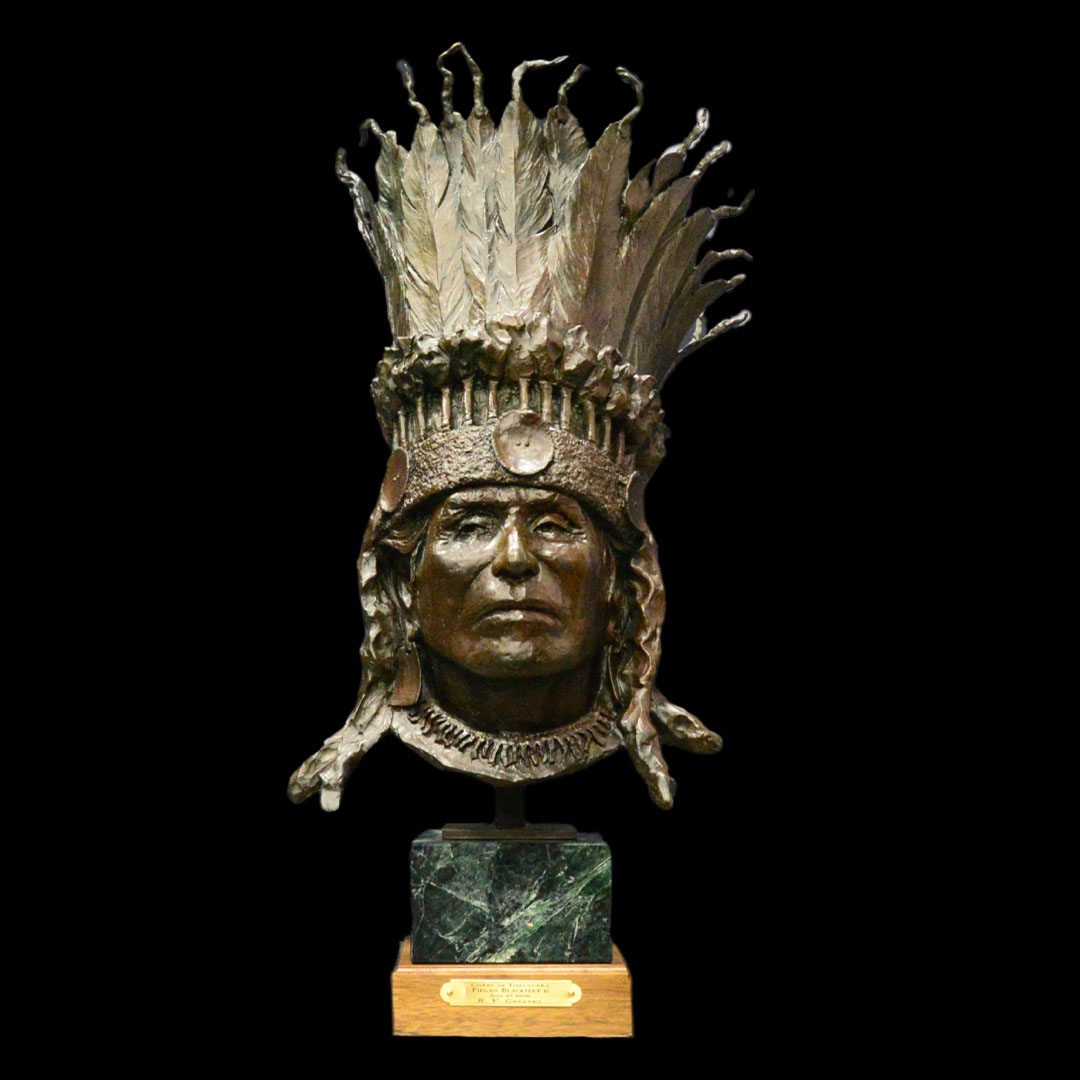Crowned in sovereignty—his silence speaks louder than any written history.
Richard Vernon Greeves
Contemporary

“Piegan Blackfeet II – July 27, 1806” by Richard Vernon Greeves is a commanding bronze bust that honors the leadership, legacy, and spiritual authority of the Blackfeet people. With his elaborate feathered headdress and focused gaze, the subject is rendered not as a symbol—but as a presence: dignified, unflinching, and utterly human.
The sculpture references a pivotal and tragic encounter during the Lewis and Clark expedition—the confrontation with the Blackfeet on July 27, 1806. But rather than depict conflict, Greeves chooses to elevate voice and identity. This is not a victim of history; this is a keeper of it.
The rich detail—from the beaded medallions and symmetrical featherwork to the age-lined expression—evokes not just craftsmanship, but reverence. Greeves transforms bronze into testimony, casting a figure who demands recognition without ever raising his voice.